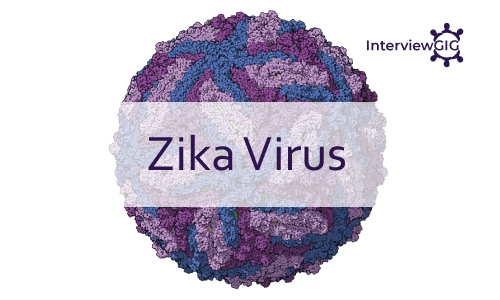Lab Technician Interview Questions
Are you preparing for a laboratory technician job interview and want to make a great impression? Whether you’re a fresher stepping into the world of lab work or an experienced technician aiming to refine your skills, knowing the frequently asked interview questions can be a game-changer.
In this article, we’ll dive into the most common questions asked in lab technician interviews and provide detailed sample answers to help you approach each question with confidence. From technical know-how to behavioural insights, you’ll find practical advice to make your preparation effective and thorough.
Laboratory Technician Responsibilities: Laboratory technicians play a critical role in scientific research, diagnostics, and industrial labs by conducting experiments, analysing samples, and ensuring accurate data collection. Key responsibilities include:
- Sample Collection and Preparation: Collecting, labelling, and preparing samples for testing following strict protocols.
- Equipment Maintenance and Calibration: Ensuring all laboratory instruments are in good working order, routinely calibrated, and properly maintained.
- Data Analysis and Reporting: Analysing test results, recording observations, and preparing reports in line with regulatory standards.
- Quality Control: Performing quality checks and adhering to safety and regulatory guidelines to maintain high standards in the lab.
- Inventory Management: Managing laboratory supplies and ensuring that stock levels are maintained to avoid any disruptions in lab operations.
- Collaboration: Working closely with scientists, healthcare professionals, or researchers to support project goals and troubleshoot any technical issues.
- Safety Compliance: Following safety protocols, handling hazardous materials with care, and keeping up with best practices to create a safe lab environment.
This comprehensive guide will equip you with both the knowledge and confidence needed to excel in your lab technician interviews and advance your career in this essential field.
Question: Tell us about yourself and why you chose to become a laboratory technician.
Sample Answer: “I have always had a passion for science and understanding how things work on a deeper level. During my studies, I was particularly drawn to the hands-on work in the laboratory. I enjoy the process of conducting experiments, analyzing samples, and working with precise instruments. Becoming a laboratory technician allows me to apply my interest in science to real-world applications, such as assisting in research, diagnostics, or quality control in various industries. I find it rewarding to contribute to a team that seeks to uncover important data and results through careful experimentation.”
Question: What do you know about the role of a laboratory technician?
Sample Answer: “A laboratory technician is responsible for conducting tests and experiments, analyzing samples, and maintaining laboratory equipment. The role involves following standard operating procedures (SOPs) to ensure accuracy and consistency in the results. Laboratory technicians also need to record data accurately, ensure that samples are properly labeled, and ensure that the laboratory environment is clean and safe, following proper safety and sterilization protocols. Depending on the field, a laboratory technician may also work with chemicals, biological specimens, or specialized equipment like centrifuges and spectrometers.”
Question: What laboratory equipment are you familiar with?
Sample Answer: “I am familiar with a range of basic laboratory equipment such as microscopes, centrifuges, autoclaves, pH meters, pipettes, spectrophotometers, and balances. I have used microscopes for sample analysis, centrifuges for separating liquids based on density, and spectrophotometers for measuring absorbance in chemical solutions. Additionally, I have experience handling pipettes for precise liquid transfer and autoclaves for sterilizing equipment.”
Question: What are some common laboratory tools, and how are they used?
Sample Answer: “Some common laboratory tools include pipettes, which are used for transferring precise amounts of liquid; test tubes and beakers, which are used for mixing or holding samples; centrifuges, which are used to separate substances by density; and microscopes, which allow for the observation of microscopic organisms or cells. Balances are also frequently used to measure the mass of substances accurately. Each tool has its specific purpose, and understanding how to handle them properly is crucial for obtaining accurate results in the lab.”
Question: Have you ever worked with microscopes? Can you explain the basic operation?
Sample Answer: “Yes, I have worked with microscopes, particularly in biological labs. To use a microscope, you first prepare the specimen on a glass slide, often with a cover slip to protect the sample. After placing the slide on the stage, you start with the lowest magnification to find the area of interest, using the coarse focus knob to bring the specimen into view. Then, you can switch to higher magnifications and fine-tune the focus with the fine adjustment knob for more detailed observations. It’s important to adjust the light source and diaphragm for proper illumination to see the specimen clearly.”
Question: How familiar are you with handling blood samples or other biological specimens?
Sample Answer: “I have learned about the proper procedures for handling biological specimens, including blood samples, during my training. It’s essential to follow safety protocols such as wearing personal protective equipment (PPE) like gloves, lab coats, and goggles, and to handle samples carefully to avoid contamination. Blood samples must be labeled correctly and stored under appropriate conditions, such as in a refrigerator, to maintain their integrity. I also understand the importance of using sterile equipment to prevent contamination and ensure accurate results.”
Question: What is the purpose of a spectrophotometer, and how is it used?
Sample Answer: “A spectrophotometer is used to measure the absorbance or transmittance of light through a sample at specific wavelengths. This allows us to determine the concentration of a substance in a solution based on its absorbance. To use a spectrophotometer, you first calibrate it with a blank sample, typically a solvent without the analyte, to set a baseline. Then, the sample is placed in a cuvette and inserted into the machine. The spectrophotometer measures how much light at a specific wavelength passes through the sample, which is used to calculate the concentration using the Beer-Lambert law.”
Question: What safety protocols do you follow in the laboratory?
Sample Answer: “Safety in the lab is a top priority, and I follow protocols such as wearing appropriate PPE like gloves, lab coats, and goggles to protect myself and others. I am trained in handling chemicals and biological specimens safely, including proper storage and disposal. I always work under a fume hood when handling volatile or hazardous chemicals and ensure that all containers are labeled correctly. I also follow the procedure for dealing with spills and emergency situations, including knowing the location of safety showers, eyewash stations, and fire extinguishers.”
Question: What experience do you have with advanced laboratory equipment such as spectrometers or centrifuges?
Sample Answer: “I have experience working with both spectrometers and centrifuges during my academic training. I have used spectrometers to measure the absorbance of light in different samples, primarily in chemistry experiments to analyze concentration levels. I am also familiar with centrifuges, which I have used to separate mixtures based on density, such as blood components. I understand the importance of balancing the centrifuge correctly to prevent damage and ensure accurate separation. Additionally, I follow maintenance protocols to keep this equipment functioning properly.”
Question: Can you explain the concept of pH and how to measure it?
Sample Answer: “The pH scale measures how acidic or basic a solution is, ranging from 0 to 14. A pH value below 7 indicates an acidic solution, 7 is neutral, and values above 7 indicate a basic or alkaline solution. To measure pH, we typically use a pH meter or pH indicator strips. With a pH meter, you immerse the probe in the sample, and the device gives a digital reading of the pH level. Calibration of the pH meter with standard buffer solutions is important before taking measurements to ensure accurate results.”
Question: What are the basic steps of a blood test (for example, CBC or glucose test)?
Sample Answer: “For a Complete Blood Count (CBC) test, the process begins with the collection of a blood sample using a sterile syringe or vacuum tube. The sample is then labeled and placed into a tube containing an anticoagulant to prevent clotting. The blood is processed in an automated analyzer, which counts different blood components like red blood cells, white blood cells, hemoglobin, and platelets.
For a glucose test, a blood sample is collected, and the plasma is separated using a centrifuge. The glucose concentration is measured using chemical reagents or a glucometer. Results are documented and reviewed to ensure accuracy.”
Question: What is the importance of quality control in a laboratory setting?
Sample Answer: “Quality control is essential to ensure that laboratory results are reliable, accurate, and consistent. It involves running control samples with known values alongside actual test samples to verify that equipment is functioning correctly and procedures are being followed properly. Quality control helps identify potential errors early, whether due to faulty equipment, contamination, or procedural mistakes. This process ensures that the data generated can be trusted for clinical diagnosis or research, minimizing the risk of incorrect results affecting patient care or study outcomes.”
Question: Can you describe the process of calibrating laboratory instruments?
Sample Answer: “Calibrating laboratory instruments involves comparing the readings of the instrument with a standard or known reference to ensure accuracy. For example, when calibrating a pH meter, I would use standard buffer solutions with known pH values (e.g., pH 4, 7, and 10). I would immerse the pH probe into each buffer and adjust the instrument to match the known values. Regular calibration ensures that the instrument remains accurate over time and prevents errors in measurements. It’s important to follow the manufacturer’s guidelines and document the calibration for future reference.”
Question: How do you handle hazardous chemicals or materials?
Sample Answer: “When handling hazardous chemicals or materials, I always follow strict safety protocols, starting with wearing appropriate personal protective equipment (PPE) such as gloves, goggles, and lab coats. I handle volatile chemicals under a fume hood to prevent exposure to toxic fumes and ensure proper ventilation. Hazardous materials are always labeled clearly, and I store them in designated areas, following safety data sheet (SDS) recommendations. In case of spills, I am trained to follow the appropriate cleanup procedures using spill kits, and I always dispose of hazardous waste according to regulatory guidelines.”
Question: Describe any previous laboratory experience you have (internships, projects, etc.).
Sample Answer: “During my academic training, I completed an internship in a clinical diagnostic lab, where I assisted in running blood and urine tests, including CBC, glucose, and lipid profile tests. I gained hands-on experience with lab equipment like microscopes, centrifuges, and automated analyzers. I was responsible for preparing samples, running tests, and documenting results. Additionally, I worked on a university project that involved analyzing water samples for microbial contamination, where I used techniques like gram staining and culturing to identify bacteria. These experiences helped me develop my lab skills and reinforced the importance of precision and accuracy in every task.”
Question: Explain the procedure for preparing a sample for testing.
Sample Answer: “The procedure for preparing a sample for testing typically involves several steps. First, I ensure that I have the correct collection container and that it is sterile if necessary. For blood samples, I would use a sterile syringe or vacuum tube, and for other specimens, I would choose appropriate containers. After collecting the sample, I would label it clearly with relevant information such as patient ID, date, and type of test. Next, I would process the sample as required—this may involve centrifugation to separate components, dilution if necessary, or adding reagents. Finally, I would ensure the sample is stored correctly, whether that means refrigeration or at room temperature, depending on the testing requirements.”
Question: How do you ensure cleanliness and sterilization in the lab?
Sample Answer: “Ensuring cleanliness and sterilization in the lab is crucial for accurate results and safety. I start by keeping workspaces clean and organized, regularly wiping down surfaces with disinfectant. All glassware and reusable equipment are properly washed and sterilized using an autoclave or appropriate chemical sterilants. I follow strict protocols for handling samples to prevent contamination, using sterile tools and working in a clean environment. Additionally, I ensure that personal protective equipment (PPE) is used and that any spills are cleaned immediately following the proper safety procedures.”
Question: What is the importance of calibration in laboratory work?
Sample Answer: “Calibration is vital in laboratory work to ensure that instruments produce accurate and reliable results. By regularly calibrating instruments, we can identify any discrepancies or drifts in performance that could lead to erroneous measurements. For example, when using a pipette, calibration ensures that it dispenses the correct volume, which is crucial in experiments and analyses. Calibration helps maintain the integrity of the data collected, reduces the risk of errors, and ensures compliance with quality standards and regulations in laboratory practices.”
Question: Explain the difference between qualitative and quantitative analysis.
Sample Answer: “Qualitative analysis focuses on identifying the presence or absence of a substance or component within a sample without determining its quantity. For instance, qualitative tests can indicate whether a specific pathogen is present in a sample. In contrast, quantitative analysis measures the exact amount or concentration of a substance in a sample. For example, a quantitative blood glucose test provides a specific concentration of glucose present in the blood. Both types of analysis are essential in laboratory settings, depending on the objectives of the study or test being conducted.”
Question: How familiar are you with handling blood samples or other biological specimens?
Sample Answer: “I am familiar with handling blood samples and other biological specimens, having learned about proper procedures during my training. This includes using sterile techniques to collect and process blood samples, labeling them accurately, and understanding the importance of maintaining the integrity of the samples through proper storage and handling. I also know the protocols for disposing of biological waste and the importance of wearing PPE to prevent contamination and ensure safety.”
Question: Have you used any laboratory information management systems (LIMS)? If so, which ones?
Sample Answer: “Yes, I have used laboratory information management systems (LIMS) during my internship. I worked with [insert specific LIMS, e.g., LabWare LIMS or STARLIMS], where I was involved in entering sample data, tracking sample processing status, and generating reports. I found LIMS to be incredibly useful for improving workflow efficiency, ensuring accurate record-keeping, and facilitating easy access to data for analysis. I learned how to navigate the system effectively, which helped streamline many lab processes.”
Question: Explain your experience with molecular biology techniques like PCR or ELISA.
Sample Answer: “I have hands-on experience with PCR (Polymerase Chain Reaction) and ELISA (Enzyme-Linked Immunosorbent Assay) techniques during my coursework and internships. In PCR, I learned how to set up reactions, prepare DNA templates, and use thermocyclers to amplify specific DNA sequences. I also performed gel electrophoresis to analyze PCR products. In ELISA, I was involved in preparing samples, coating plates with antigens, and developing the assay to quantify protein levels in various samples. Both techniques are essential for molecular diagnostics and research, and I appreciated the precision and attention to detail required in each step.”
Question: Have you had any experience with supervising or training junior lab technicians? If so, explain your approach.
Sample Answer: “While I haven’t held a formal supervisory position, I have had the opportunity to assist in training junior interns during my internship. My approach involves first providing a thorough overview of the laboratory procedures and the importance of following safety protocols. I believe in hands-on learning, so I guide them through the practical aspects, allowing them to perform tasks under supervision while ensuring they understand each step. I encourage questions and provide constructive feedback to help them improve their skills. Additionally, I emphasize the importance of teamwork and communication to create a supportive learning environment.





